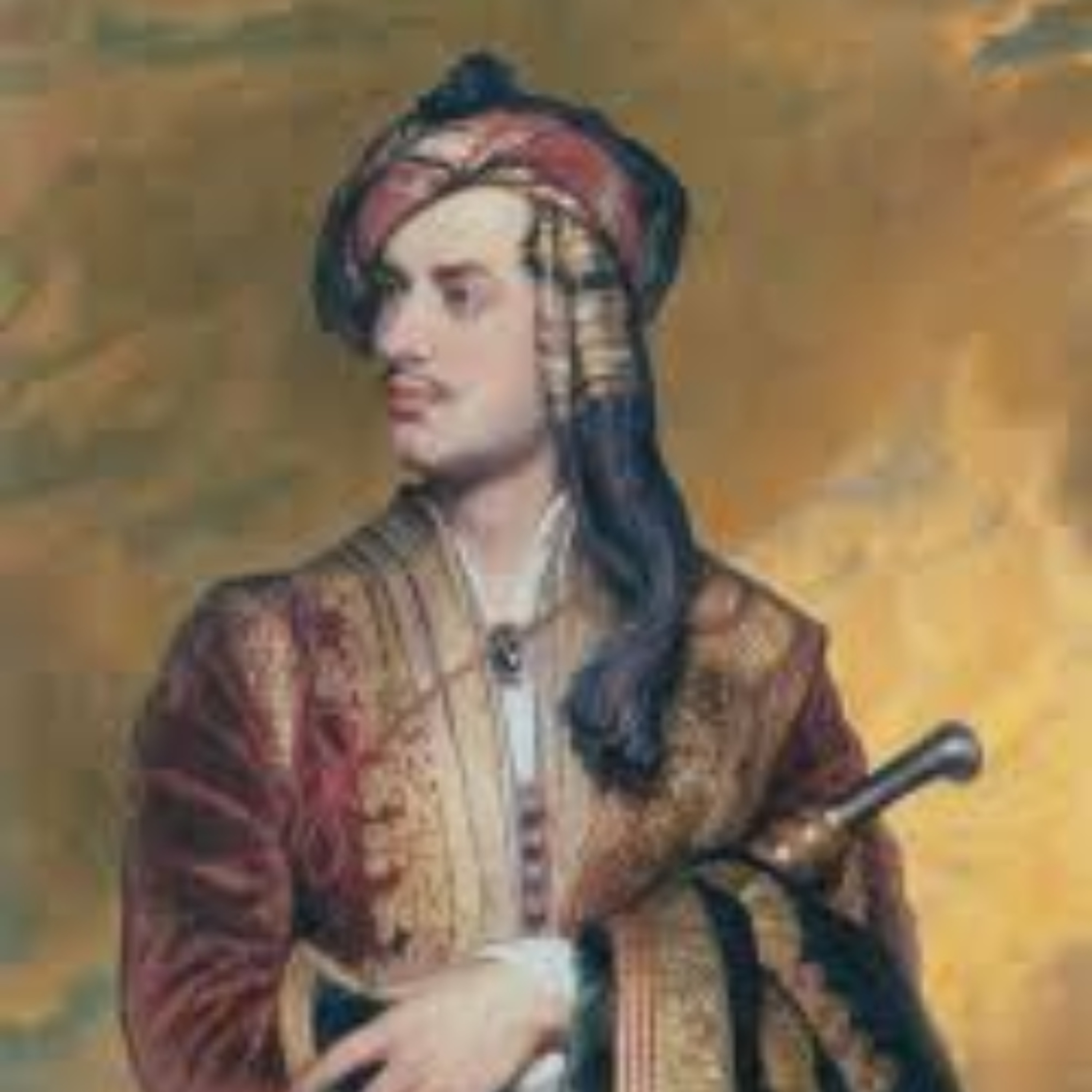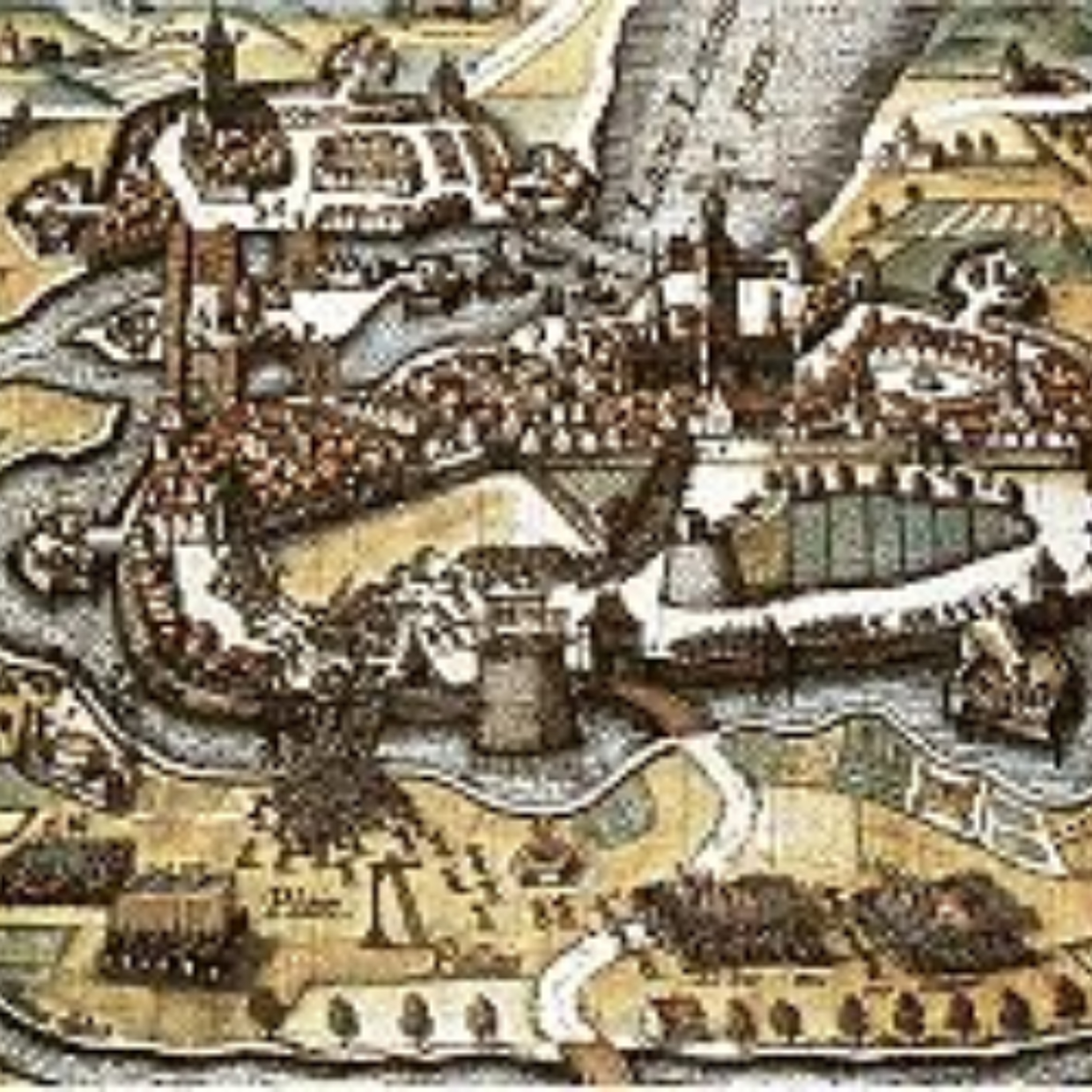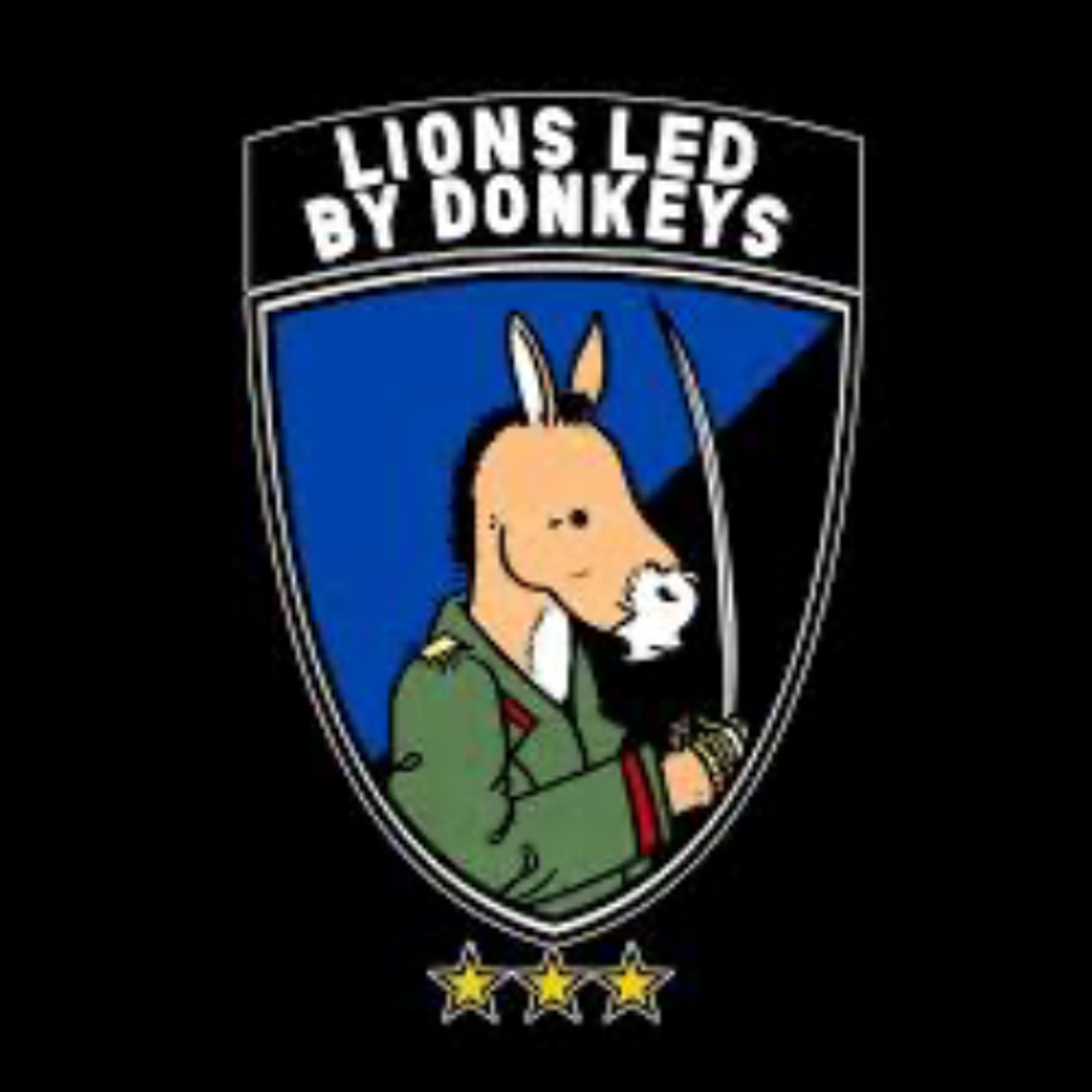*PREVIEW* The Insane First Pilots of the US Postal Service ft. Josh Boerman
https://www.patreon.com/posts/128348764?pr=true
COME SEE US LIVE IN LONDON JUNE 22ND
https://bigbellycomedy.club/event/lions-led-by-donkeys-podcast-live-big-fat-festival-southbank/
Press play and read along
Transcript
Speaker 1 This did convince a lot of people in Congress by 1916, after doing this whole tour thing for a while, to look into it, spend money to look into if an expanded air mail system would work.
Speaker 1 They proved $50,000 to do it, which is a lot of money for back in the day. But then we have a problem.
Speaker 1 So the government didn't want to do the experiments themselves.
Speaker 1
They wanted a contractor. This is the United States we're talking about.
Yeah, of course. The problem is there's no aviation sector, really.
Sure. There are no companies to do this.
Speaker 1 There's no contractors.
Speaker 2 And I just ran inflation calculator for 50K from, what, you said 1915, right?
Speaker 1 Yeah.
Speaker 1 1916, but pretty much the same.
Speaker 2 So you're looking at like a million and a half. Like that's a chunk of change, but that's not that much money.
Speaker 1
It's a lot of money for the U.S. government in 1916.
True. The U.S.
government really isn't taxing very effectively then. They don't really spend a whole lot.
Speaker 1 It's still very much when like federalism existed.
Speaker 2 This is before the advent of the income tax.
Speaker 1
So they dropped it. They dropped the whole idea.
They can't get anybody to do it until 1917. It was approved again.
And this time when nobody else stepped forward to do it, the U.S.
Speaker 1
Army Air Corps was like, we'll fucking be the airmail. So the U.S.
airmail system was born on the back of the United States Air Force. Hell yeah.
Speaker 2 They take all the letters, they load them into Snoopy's doghouse, and the flying ace flies once again.
Speaker 1
There you go. It's important to remember that this is 1917.
World War I is still going on. Sure.
And it didn't take long for the Postal Service and the Department of War to come up with an agreement.
Speaker 1
The Post Office would just give them the mail and the Army would do everything else. With one small caveat, the U.S.
Army would not be giving over their actual pilots.
Speaker 1 All of the airmail deliverymen would be student pilots. They're flying the mail for more experience.
Speaker 2 I mean, that makes a lot of sense, honestly.
Speaker 1 Yeah, it 100% does. It gets them dozens of more flying hours than they ever were going to get before they went and crashed into the French countryside.
Speaker 2 Instead, we have U.S. mail crashing in Iowa or whatever.
Speaker 1 That is exactly what happened.
Speaker 1 This all happens very quickly.
Speaker 1 The Secretary of War and the Postmaster General agreed in February 1918, and the first shipments start in May, servicing one line between DC and New York with a single stopover in Philly.
Speaker 1 Because remember, these planes can't exactly go very far without having to stop. This is an easy way for pilots to get hours under their belt.
Speaker 1 And it was for a time a very safe way for the Army to use their pilots.
Speaker 1 In the three months that the Army ran the airmail delivery service, they knew exactly where they were going each time, which was obviously a very big obstacle back in the day.
Speaker 1 If a pilot didn't accidentally kill themselves while flying, getting lost was the next biggest threat. Because normally what happens is they get lost and they accidentally run out of fuel and crash.
Speaker 1 So, and getting lost back then was very, very common. Because remember, there are zero instruments at all.
Speaker 2 I guess, but I mean, if the, if, if the thing is DC to New York, like
Speaker 2 you can use natural landmarks to navigate most of that, I would think.
Speaker 1
That's exactly what they do. At best, pilots will have a map strapped to their legs.
Oh, wow. Yeah.
And that isn't to say the job was easy.
Speaker 1
Like I said, they're using army training pilots, and those pilots are using their training planes. They're nicknamed the Jennies.
They have no radios, no navigational tools, nothing.
Speaker 1 And like you said, the pilots were forced to navigate using dead reckoning and landmarks.
Speaker 1 Meaning you had pilots following roads, train tracks, rivers, sometimes telegraph poles to find where they were going, which is far from ideal, but it does work.
Speaker 1 However, this is going to run to some problems with pilots who are not at all familiar with the places that they're going.
Speaker 1 During the very first mail flight, pilot George Boyle followed the wrong railroad tracks out of DC, got lost, and crash-landed in Maryland 25 miles away.
Speaker 1 He did manage to save the mail, though, and had to be transported over a truck. Oh, that's good.
Speaker 1 I mean, I imagine it also creates some issues if, let's say, there are low-hanging clouds and you don't know where you're going. Weather is going to become
Speaker 1 a really big problem for these guys.
Speaker 1 The whole point of this original airmail service was to prove it to be doable, profitable, but most importantly, to build on foundations, including organization and logistics.
Speaker 1 So the postal service could then expand it much, much further.
Speaker 2 I'm seeing parallels here between this and other infrastructure projects like the federal highways, which would, of course, come about in the 1950s. Same thing.
Speaker 2 It was all built to be able to more effectively transport material if needed for the military. Yeah.
Speaker 1 The idea was eventually, because obviously they're just flying from D.C. to New York, but the idea is this is eventually going to span all of continental United States.
Speaker 1 And with World War I winding down, the Postal Service took the service back. Now, airmail is once again under the control of the United States Postal Service.
Speaker 1 And this happened to create the perfect employment pipeline because remember, World War I is is over. Everybody's downsizing their militaries, left, right, and center.
Speaker 1
Pilots are losing their job from the army. There is nowhere else for them to really work.
The aviation sector doesn't really exist.
Speaker 1 These guys can't just like go work for American Airlines or whatever, like a lot of them do now. But this created a civilian job for them to just step right into.
Speaker 1 And there were hundreds of positions, end up hiring over 200 of them. So this creates a perfect lateral move into the first wide-scale wide-scale civilian employment of pilots in the United States.
Speaker 1
And this is who staffs the U.S. Air Mail Service.
There are some civilians hired at first to, you know, flesh it out, but it's almost entirely World War I veteran pilots.
Speaker 1 And there's actually something kind of funny here, how pilots were seen by the government and virtually everyone else at the time.
Speaker 1 And admittedly, they still kind of are to this day when you talk about fighter pilots. And that is, in Europe, pilots in World War I were kind of seen as modern day knights.
Speaker 1
But in America, we didn't have knights. There's no cultural attachment to them.
You could probably pull it off now, but you couldn't pull it off back then.
Speaker 1 So they instead had to think of a way to portray these pilots in a way that would speak to the American cultural norms. And that is, frame those as like badass,
Speaker 1 loose-canded adventurers. And pilots fit that role.
Speaker 2 And this again, I mean, I mentioned Snoopy jokingly earlier, but the character of the World War I flying ace is just this archetype.
Speaker 1
Yep. And I mean, like I said, it still continues to this day for fighter pilots.
Like fighter pilots have a reputation for being over-the-top dickheads with like egos the size of their planes, right?
Speaker 1
And admittedly, that's what like the badass adventure type is as well. Like they don't care.
They'll do crazy stunts and shit for funsies.
Speaker 1 That was
Speaker 1 the image they meant to portray. And pilots themselves, you know, when you, when you have that feedback loop, they start living that portrayal.
Speaker 1 And so when all of them ended up getting hired by the Postal Service, the first rule given to all of them was, don't do stunts in government planes.
Speaker 2 Have a feeling that rule was not followed scrupulously.
Speaker 1 It was not.
Speaker 1 The second rule was, do not drink and fly government planes.
Speaker 2 That probably was followed even less scrupulously.
Speaker 1 That is also correct.
Speaker 1 Only after those two rules were, make sure your plane was safe to fly.
Speaker 1 And remember how I said pilots are flying off of landmarks? Well, there obviously wouldn't always be landmarks. You already point out bad weather being a thing.
Speaker 1 And there would be parts of the United States where bad weather was coming place, especially in these earlier lines of the airmail service.
Speaker 1 They're flying mostly in the east coast and into the Midwest, kind of like into Pennsylvania and the Allegheny Mountains.
Speaker 1
And it turns out those mountains are known for really, really, really bad weather. I don't know Pennsylvanians probably know this better than I do.
I don't, I don't know fuck all about that place.
Speaker 1 But specifically when it comes to flying a plane, there's always fog, there's rain, there's snow. And remember, all this is in an exposed cockpit.
Speaker 1 There's nothing to protect these guys when they fly through this weather. So when they fly through something like that, they're completely blind.
Speaker 1 And when you get lost in the clouds and you get lost in the weather and you're in the mountains, it's only a matter of time for you to smash into the side of a mountain and die.
Speaker 1 And that's exactly what happened to a lot of pilots flying over the stretch of their mail route. One pilot, a guy named J.
Speaker 1
Dean Hill, came up with a genius or insane solution to this, and that was a cigar. This is from a popular mechanics article.
Quote, J.
Speaker 1 Dean Hill crossed the Alleghenies by first lighting a long cigar and then climbing above the cloud deck. He leisurely puffed on the stogie until only two unburnt inches remained.
Speaker 1 By that time, he figured he was safe enough to descend from over the mountains and land safely in a feel in Belafonte, Pennsylvania. What?
Speaker 1 Jokingly claiming that his cigar was the first instrument to aid commercial flyers.
Speaker 1 Because there was no way for him to keep time while flying.
Speaker 1
There wasn't even a clock in the plane. So he timed it with his cigar.
He could have used a wristwatch or something. He sure could have.
Speaker 1 Dudes rock.
Speaker 1 Dudes fucking rock. I mean, you have to,
Speaker 1 what are you picturing in your head right now? Like, I got a guy in goggles, definitely a scarf,
Speaker 1
a cigar the size of a fucking baby's arm clenched between his teeth. Absolutely.
This is the picture of the pilot in the era, you know.
Speaker 2 Oh, fantastic.
Speaker 1 But that was keeping in step with how pilots were getting directions in the first place. For example, pilots would kind of tell each other how to safely get around.
Speaker 1
Like, oh, I don't know how to get to this place. So, someone like J.D.
Hill would be like, oh, fly north five minutes and then fly east 10. You'll get there.
Sweet. Yeah.
Speaker 1
If you need a way to time it, try smoking cigars. And some guy's like, actually, I bought this thing called a watch.
And he says, go fuck yourself, witch.
Speaker 1 Get out of here with that sorcery.





